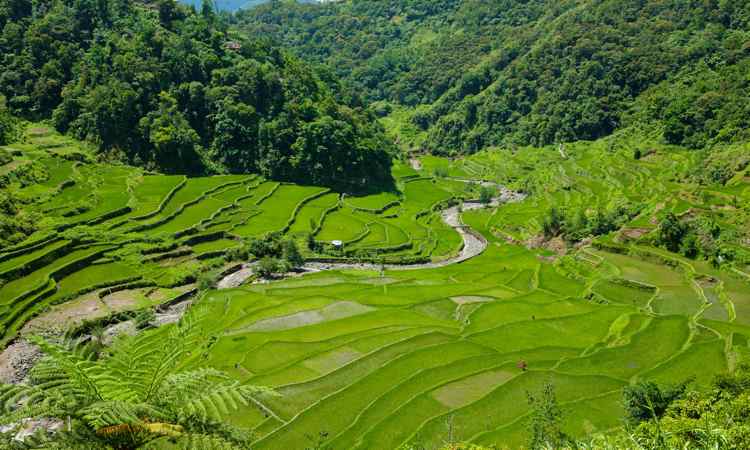High in the Central Cordillera Mountains of the Philippines, indigenous people in the Kalinga, Ifugao, and Mountain Provinces are growing important heirloom rice varieties that may survive for only a few more generations. Chong-ak, Imbuucan, and Ominio rice varieties are all products recognized by The Arc of Taste, a project of the Slow Food Foundation for Biodiversity to draw attention to, and protect, heirloom crop varieties at risk of extinction.
For a product to be included in The Arc of Taste, it must meet several criteria: it must be of distinctive high quality, produced in small quantities, at risk of extinction, and linked to the collective memory and identity of the local people. Alaric Francis Santiaguel, a writer and editor at the International Rice Research Institute (IRRI), describes the importance of heirloom rice varieties to the people of the Cordillera Mountains in his article “The Seed Keepers’ Treasure.” He writes, “Heirloom rice is a spiritual bridge to the ancestors who built considerable knowledge through trial and error and fashioned unique technologies from experiences collected over the centuries. It has become as much a part of the regions’ culture and identity as the resplendent rice terraces that the people’s forebearers carved out of the mountainsides.”
For centuries, women in the Cordillera Mountains have kept this culture and identity alive. They are the primary holders of the knowledge on seed selection, planting, and harvesting. Chong-ak rice, found mainly in the high Kalinga Province, is a cold-tolerant rice that has never been through a formal breeding program for improvement. It is a staple variety of rice that is used by the Taguibong people at important cultural events. In particular, Chong-ak is served at family gatherings before a sick or elderly person dies. Both Imbuucan and Ominio rice varieties are cultivated in the Ifugao Province. According to RICE, Inc. (Revitalize Indigenous Cordilleran Entrepreneurial initiatives), a non-profit in the Philippines that works to preserve the culture of community rice production, the culture of Ifugao people is intimately connected to rice cultivation. Twelve rice rituals throughout the year define the calendar of the native Ifugao people. Each ritual helps to maintain the balance between the people and their environment, as well as ensure a good harvest. Ominio rice is also cultivated in Mountain Province, and is primarily used for desserts and wine production.
Information and knowledge on these rare rice varieties is not widely available. The Slow Food Foundation for Biodiversity and Terra Madre are working to change that through projects such as The Arc of Taste. The World Heritage Centre, a part of the United Nations Educational, Scientific and Cultural Organization (UNESCO), also recognizes the importance of the rice cultivation in the Philippine Cordilleras. They have added the Ifugao Rice Terraces to the World Heritage List, and state, “they have helped to create a landscape of great beauty that expresses the harmony between humankind and the environment.” The knowledge and cultivation of rice in the Cordillera Mountains can be traced back two millennia, but it is information passed down only though oral history. The work of Slow Food, Terra Madre, and UNESCO is helping to preserve indigenous knowledge of rice cultivation in the Philippines and the biodiversity of unique heirloom rice varieties.













